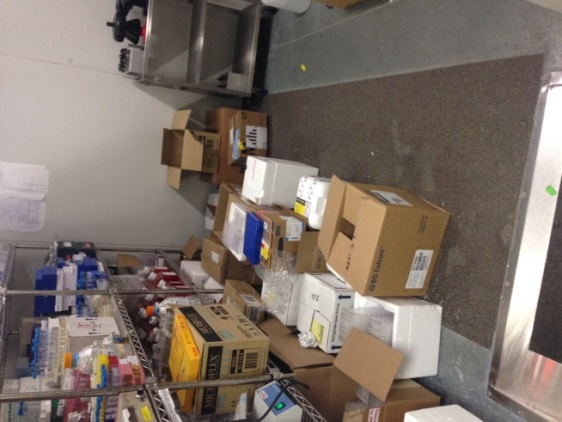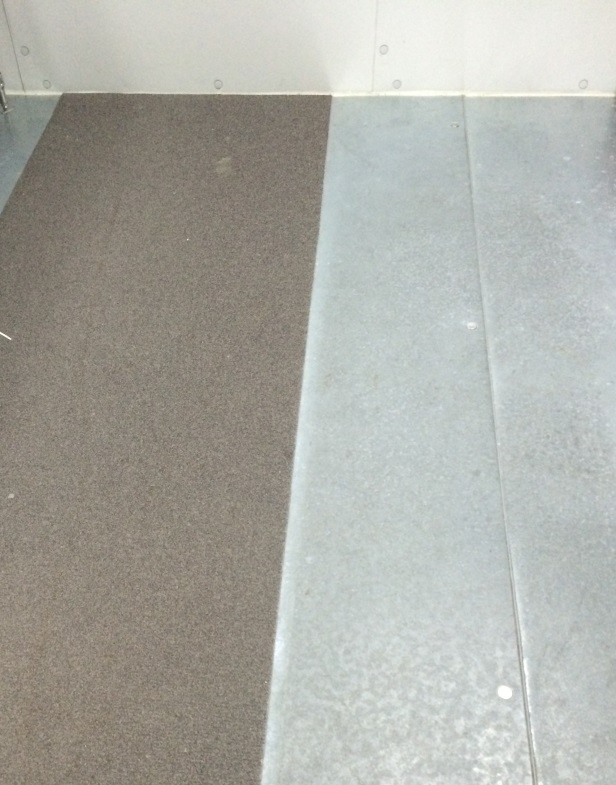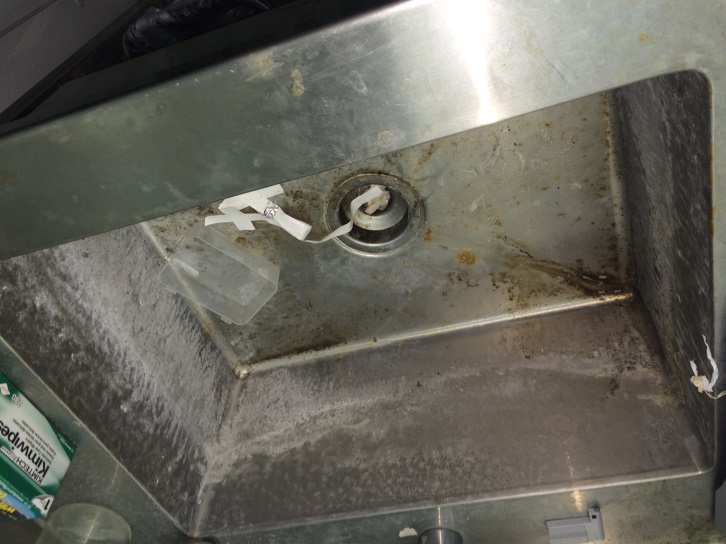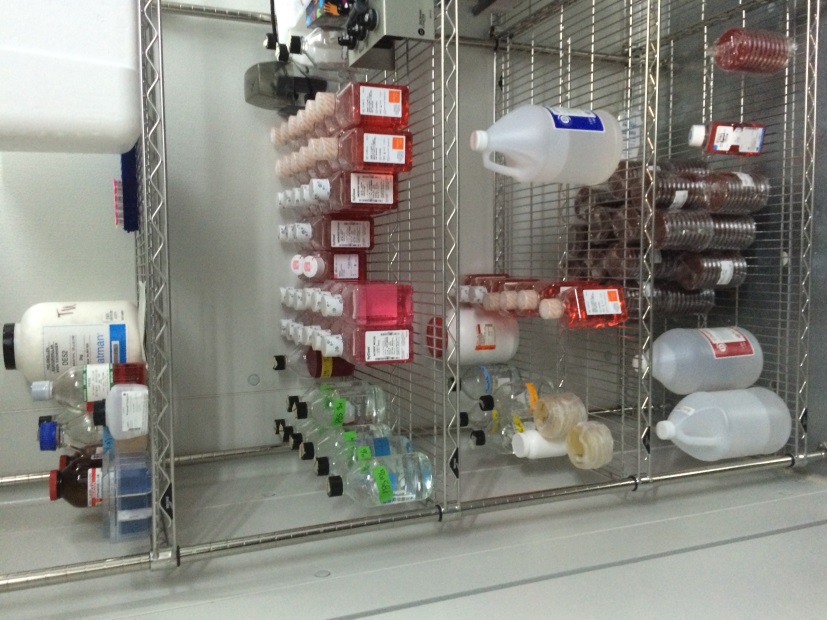1. Each laboratory using a shared cold room is responsible for ensuring that no items stored within the designated storage space are harboring mold.
2. All items in the cold room must be labeled with the Principal Investigator’s (PI) name. Any items not labeled, are subject to being removed and discarded.
3. DO NOT store cardboard or any paper products in cold rooms. Metal or plastic containers are allowed. If some paper products (e.g. Kim wipes) are required, place the item in a closed plastic container between uses. Should visible mold be found on a paper product, discard the item immediately. (see “cellulose containing materials” below)
4. DO NOT store dry ice in cold rooms. Cold rooms have minimal or no fresh air exchanges, so storing dry ice can result in asphyxiation.
5. Glassware, boxes and equipment should be placed on an open stainless steel shelf or a steel or plastic cart. Open stainless steel shelves permit air flow throughout the entire storage area. Wood shelving units are not permitted inside of cold rooms. Any item being used for storage that is non-compliant is subject to being removed and discarded, if it does not meet the outlined requirement.
6. DO NOT store items on the floor. Items left on the floor are subject to being removed and discarded.
7. DO NOT leave any items in the sink. Items left in the sink are subject to being removed and discarded.
8. DO NOT use 100% bleach on stainless steel items. Bleach is corrosive and can drill a hole through stainless steel. If and when a diluted bleach solution is used as a disinfectant, it is very important that metal surfaces be wiped down with water after being treated with bleach solutions. Thorough rinsing must be done to remove all traces of the bleach solution, because the bleach may discolor or corrode the stainless steel if left on too long. Always wear rubber gloves during this maintenance process.
9. Dispose of all trash (paper towels, tubes, etc.) outside of the cold room.
10. Promptly clean up any spilled liquid (e.g., buffers, media). Mold can thrive on any organic medium.
11. To prevent condensation, close cold room doors and assure the door stays firmly shut.
12. Immediately report water leaks or any other mechanical issues to Facilities Management at x9-4050.
Cellulose containing materials
The storage of cellulose containing materials is a leading cause of mold growth. Mold growth can contribute to contamination of research materials. Preventing mold growth in cold rooms is achieved by controlling condensation/moisture and removing materials contributing to mold growth. The above guidelines must be followed in all cold rooms on campus. In the event of mold growth, the Principal Investigator will be held responsible for the cleaning, removal and replacement of damaged or contaminated items.
Download the Cold Room Poster
Non-Compliant Cold Room |
Compliant Cold Room |
 |
 |
 |
 |

